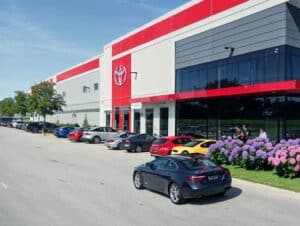The trucks and buses industry operates at the intersection of complexity and necessity. Dealerships play a vital role, acting as the face of Original Equipment Manufacturers (OEMs) and a lifeline for customers who depend on commercial vehicles for their livelihoods.
Dealer management is no longer just about selling vehicles or maintaining stock—it’s about creating a seamless ecosystem that delivers value to manufacturers, dealers, and end customers alike.
The evolution of dealer management
Dealer management has come a long way. In the past, dealerships relied heavily on manual processes and isolated systems. Orders were logged in ledgers, warranty claims were processed by fax or mail, and communication between manufacturers and dealers often felt like a game of telephone.
The rise of digital technology brought some relief—basic Dealer Management Systems (DMS) allowed for better organization and efficiency. However, these systems often lacked integration and flexibility, creating new silos and inefficiencies.
Fast forward to today, and the industry demands a modern approach. Dealer management must now leverage advanced tools like AI, real-time analytics, and integrated platforms to address evolving customer expectations and market complexities.
The daily struggles of dealer management
While advancements in technology have reshaped dealer management, challenges persist. As dealerships grow larger and more interconnected, so do the complexities of managing them.
Picture this: A dealership managing trucks and buses that’s constantly firefighting. Inventory is either overstocked or out of sync with demand. Warranty claims are piling up, leading to frustrated customers. Communication between the dealership, manufacturers, and service teams is scattered, creating delays that frustrate everyone involved.
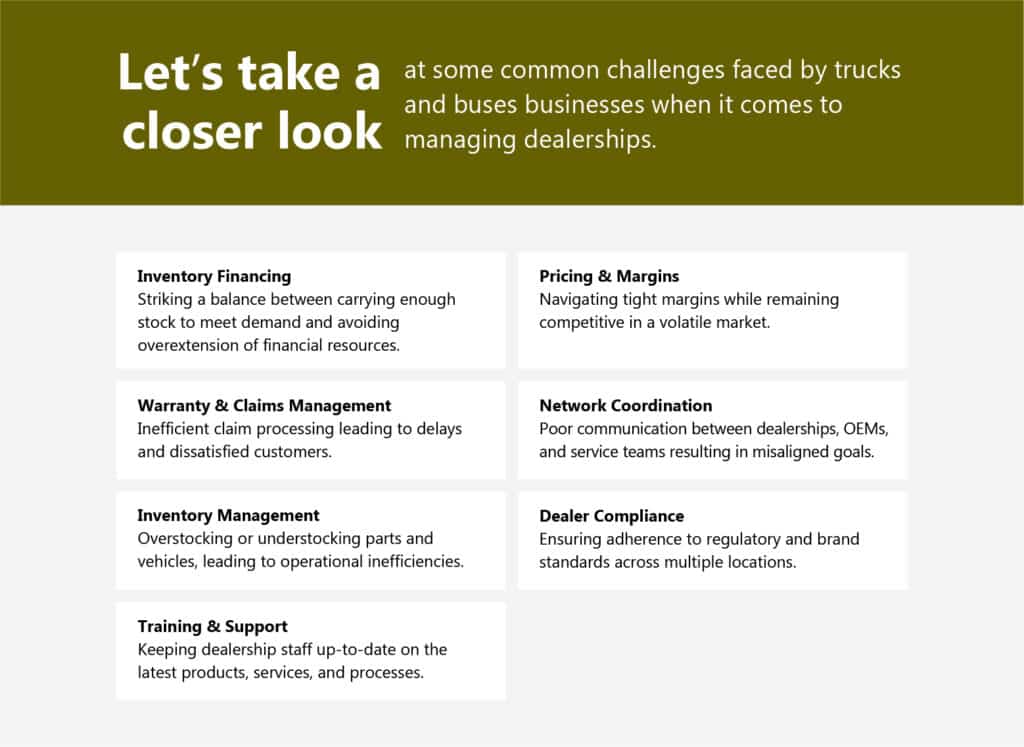
These challenges create ripple effects across the value chain, from unhappy customers to missed revenue opportunities.
A365: A technological edge for truck & bus dealer management
Now, imagine a dealership free of these constraints—where challenges become opportunities and operational excellence is the norm. Enter A365, a comprehensive solution built on Microsoft’s powerful technology stack including Microsoft Dynamics 365, Microsoft Power Platform, Microsoft Copilot, and more.
With its fully integrated digital experience, A365 enables dealerships to streamline processes, enhance collaboration, and deliver exceptional value to customers and OEMs alike.
Built on the power of Microsoft
The trucks and buses industry operates on tight margins and high customer expectations, making it essential for dealerships to have a robust, integrated solution. A365 stands out by leveraging Microsoft’s cutting-edge technologies to empower dealers with tools tailored to their specific needs:
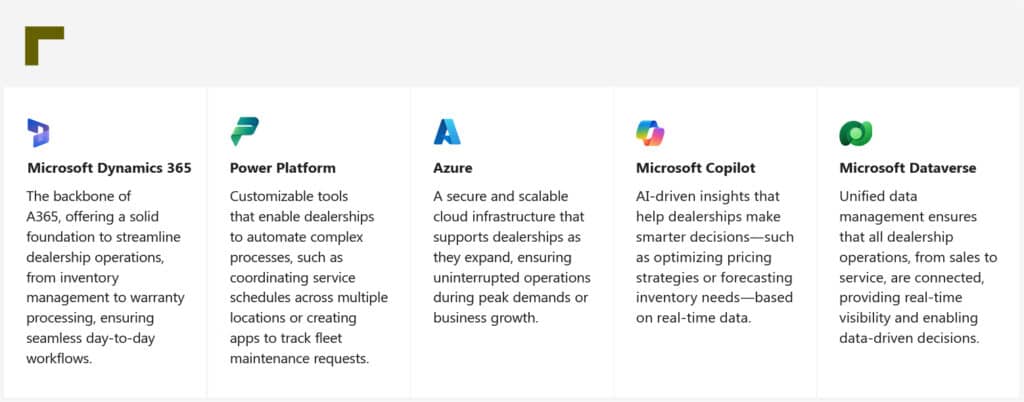
Together, these technologies empower truck and bus dealerships to offer a fully integrated digital experience. From the moment a customer walks through the door to post-sale support, A365 ensures efficiency, transparency, and satisfaction for both dealers and their customers.
A365 in action: Before and after
The beauty of A365 lies in its ability to transform the way dealer networks operate. Let’s walk through a few “before and after” scenarios to see how it works in real life.
Scenario 1: Inventory Management
Before A365: A dealer receives a last-minute bulk order from a fleet customer, only to discover they’re out of a critical part. Scrambling to source the item from other locations delays the order, upsetting the customer and damaging the dealership’s reputation.
After A365: With A365’s inventory optimization tools, the dealer has real-time visibility into stock levels across the network. Predictive analytics ensure they’re always prepared for demand spikes, and automated reordering keeps shelves stocked with the right items at the right time. The fleet customer gets their order on time, and the dealership strengthens the relationship.
Scenario 2: Warranty & Claims
Before A365: Processing warranty claims is a tedious, manual process. Claims are frequently delayed, leaving customers waiting weeks for resolution. Frustrated customers vent their dissatisfaction online, tarnishing the dealership’s image.
After A365: Claims processing is automated and streamlined. Dealers can track claims in real time, ensuring faster resolutions. Customers are kept informed at every step, leading to higher satisfaction and fewer complaints.
Scenario 3: Dealer Compliance
Before A365: Staying compliant with brand and regulatory standards is a constant challenge. Dealers often miss important updates, leading to fines or strained relationships with manufacturers.
After A365: With built-in compliance management, A365 sends automated alerts for upcoming audits, regulatory changes, or brand updates. Dealers stay ahead of the curve, maintaining strong relationships with OEMs and avoiding penalties.
How A365 empowers dealer networks
A365 is more than just a dealer management system—it’s a toolkit that empowers businesses to overcome challenges and drive success. Here’s a deeper dive into some of its standout features:
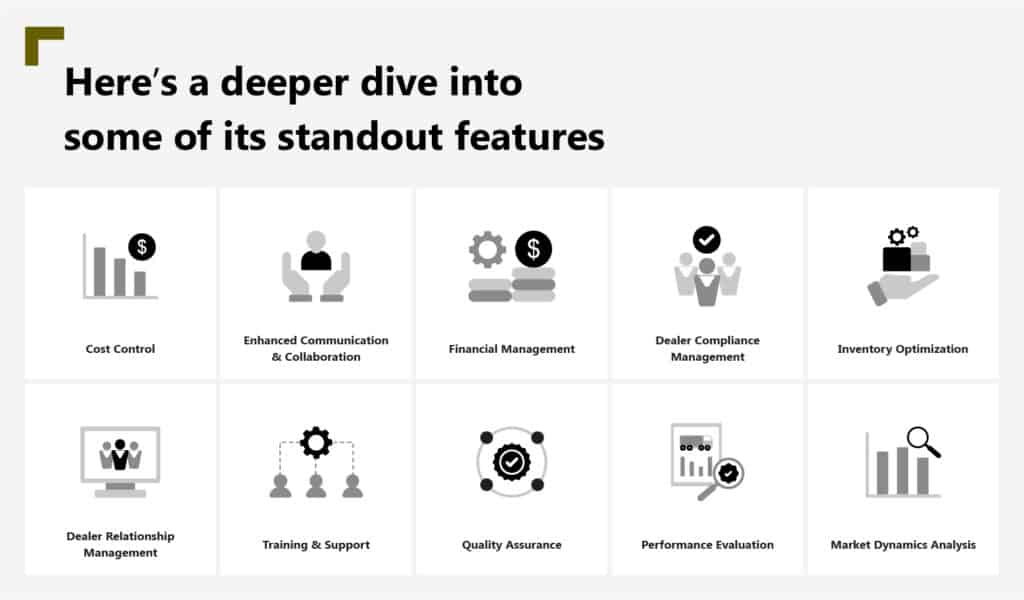
Driving dealer management success across the value chain
A365 empowers every aspect of dealer management by streamlining operations, improving communication, and ensuring alignment between dealers, OEMs, and customers. With integrated tools that optimize inventory, pricing, compliance, and service, A365 enhances dealer efficiency and drives better outcomes at every touchpoint. This creates smoother workflows and stronger partnerships across the entire dealer network, leading to improved performance and satisfaction for all involved.
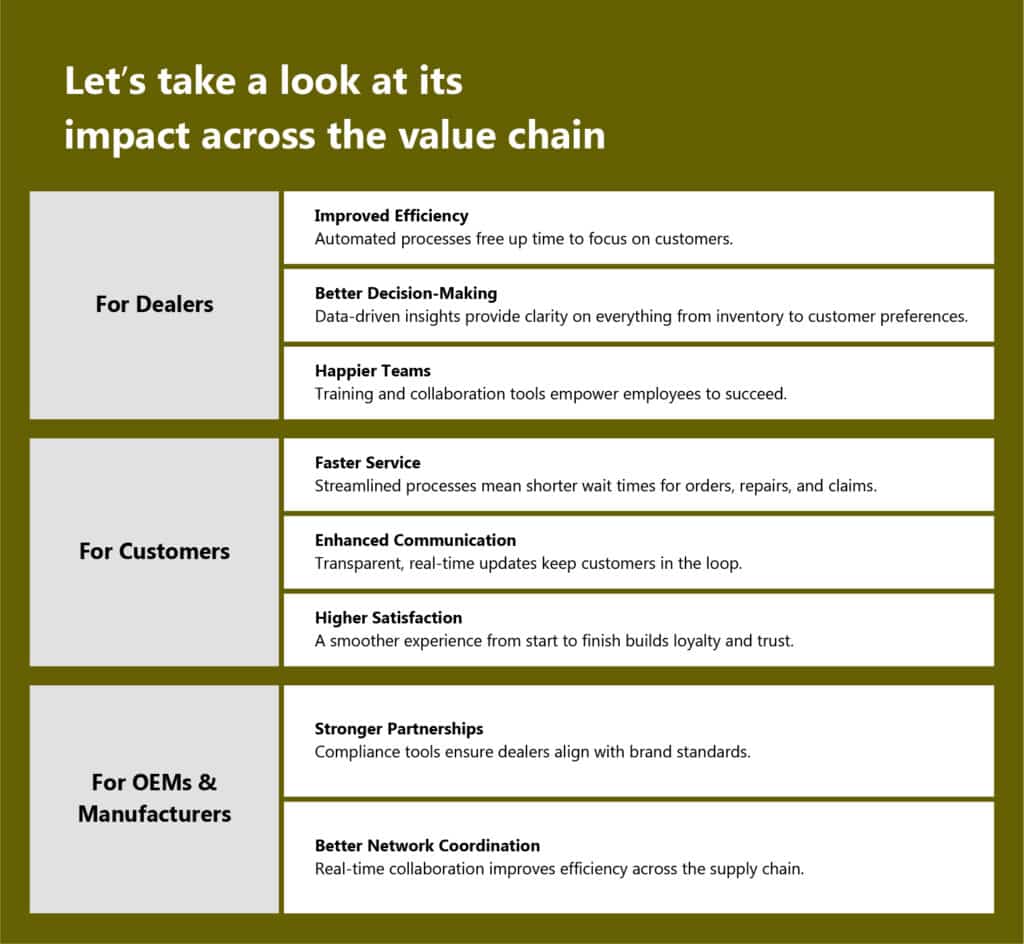
The bottom line: A365 transforms dealer management
With A365, you’re not just solving dealer management challenges—you’re setting your business up for long-term success. From optimizing inventory to enhancing dealer relationships and improving compliance, A365 empowers you to deliver exceptional experiences at every touchpoint.
Ready to take your dealership to the next level? Reach out today to see how A365 can revolutionize your trucks and buses business.




